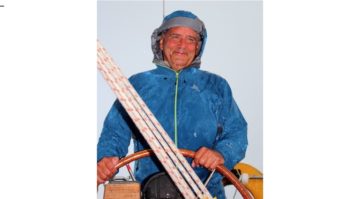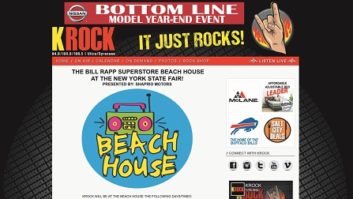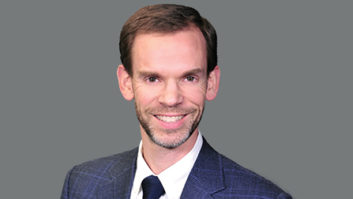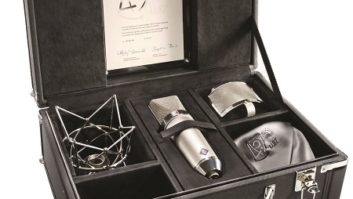If you experience a major disconnect when you try to figure out how to integrate your station with social media such as Facebook and Twitter, Jessica Northey said it’s not really your fault.

The founder of Finger Candy Media says stations should establish metrics to track the effectiveness of their social media programs. “Experts like to come in and make things complicated, give you too much information, so that they have job security.”
The founder and CEO of Tucson-based Finger Candy Media has been working in social media since her days as a non-traditional revenue manager at a broadcast radio station, back when MySpace pioneered social media.
She says her radio background helps her connect with broadcasters, and speak their language. “After my seminars, workshop or speaking gigs, broadcasters tell me they had an ‘aha moment,’ about social media … that I’m not saying anything they have trouble understanding; I’m saying it in their language.”
Northey’s presentation is built around the acronym G.R.A.S.P.:
- •Goals (what is your target group?);
- •Reach (who are you trying to reach?);
- •ABCs (what does your website look like; what does the traffic see?);
- •Sociality (what do you want to talk about?);
- •Promotion (inviting audience to follow you).
In detailing how to execute individual steps toward a successful social media program, she draws on case studies and stories about what she has experienced while was working with different radio stations, brands, celebrities and musicians.
Northey promises to demystify social media for broadcasters at her “Are You Being Followed?” session at on Monday of the NAB Show.
Goals
In that first step of goal setting, she said typical goals for a broadcaster are to increase brand awareness and manage reputation, improve search engine optimization, increase relevant visitor traffic, grow a targeted following and “own” the story online.
Pick three or so, she said. Establish metrics to track the effectiveness of your social media program.
In order to come up with a strategy or social media plan, Northey said it’s important to know whom you are trying to reach. Define your target audience, she said, and understand how and when your target audience uses social media, what their gender and age is, and where they’ll access you. Finally, what does your audience know about you today?
A station’s social media plan should mirror its marketing plan, as well as complement its traditional media goals. A strategy must be developed to engage the audience while providing meaningful, relevant and personalized content directly to them. She advises that to simplify your listener’s task of following the station among several different social media platforms, the handle (social media identifier) for each of the platforms should be the same.
One habit that Northey said dies hard at a broadcast station is that of talking at the audience.
“Learn to speak with your audience, not at them.” Social media is all about communicating and user-generated content. “Forget ‘What am I doing,’ and ask your followers, ‘What are they doing?’”
Another mistake Northey said stations make is hiding the links for their social media platforms, like Facebook and Twitter, in obscure places on the station website. She said this is often done out of fear that their audience will be hijacked on these platforms and never return to the station website.
“And then they wonder why they top out at just a few hundred followers? My dog has 5,000.” She noted that if your station, whether terrestrial radio, Internet radio or TV, is the one the audience depends on for information, that audience will keep returning to you for more.
‘Sociality’
Northey offered a couple of tips.
If you’re driving listeners to your website and social media pages like Facebook, make them desirable destinations.
“Make sure your website’s in good aesthetic shape, that you don’t have fan pages with empty tabs, no photos, no videos. Change backgrounds on platforms like Twitter, YouTube and MySpace to your station look.” You may have to hire someone to do a custom Facebook page, but she said it’s money well spent.
Also, your “stationality,” your station’s personality, and your “sociality,” or social media personality, should match. What are your brand’s unique characteristics? A station shouldn’t be one thing on the air and another in its social media.
If you don’t think social media works, Northey suggests you look at advertisements, both print and broadcast, for multi-billion dollar companies like Pepsi, Ford, GM and Sears.
“They’re putting big money into Facebook and Twitter, and at the bottom of their ads or in the tag line to broadcast spots they say: ‘Follow us @ …,’ an invitation to enter their social media world.”
Invitations to “follow us” shouldn’t just be limited to links on the station site and in on-air mentions. She counsels clients to integrate such invitations into signage at remotes, on the back of station vans, on T-shirts, buttons, bumper stickers and other handouts. Add social media platform participation links to business cards, letterhead and other broadcast and print media. Run social media-only promotional offers, and invite followers to your events. Include links where they can register.
Northey is blunt when it comes to the subject of what the five-year ROI of social media efforts are for broadcasters. “The ROI of social media for the broadcast industry is that you’ll be around in five years.”










